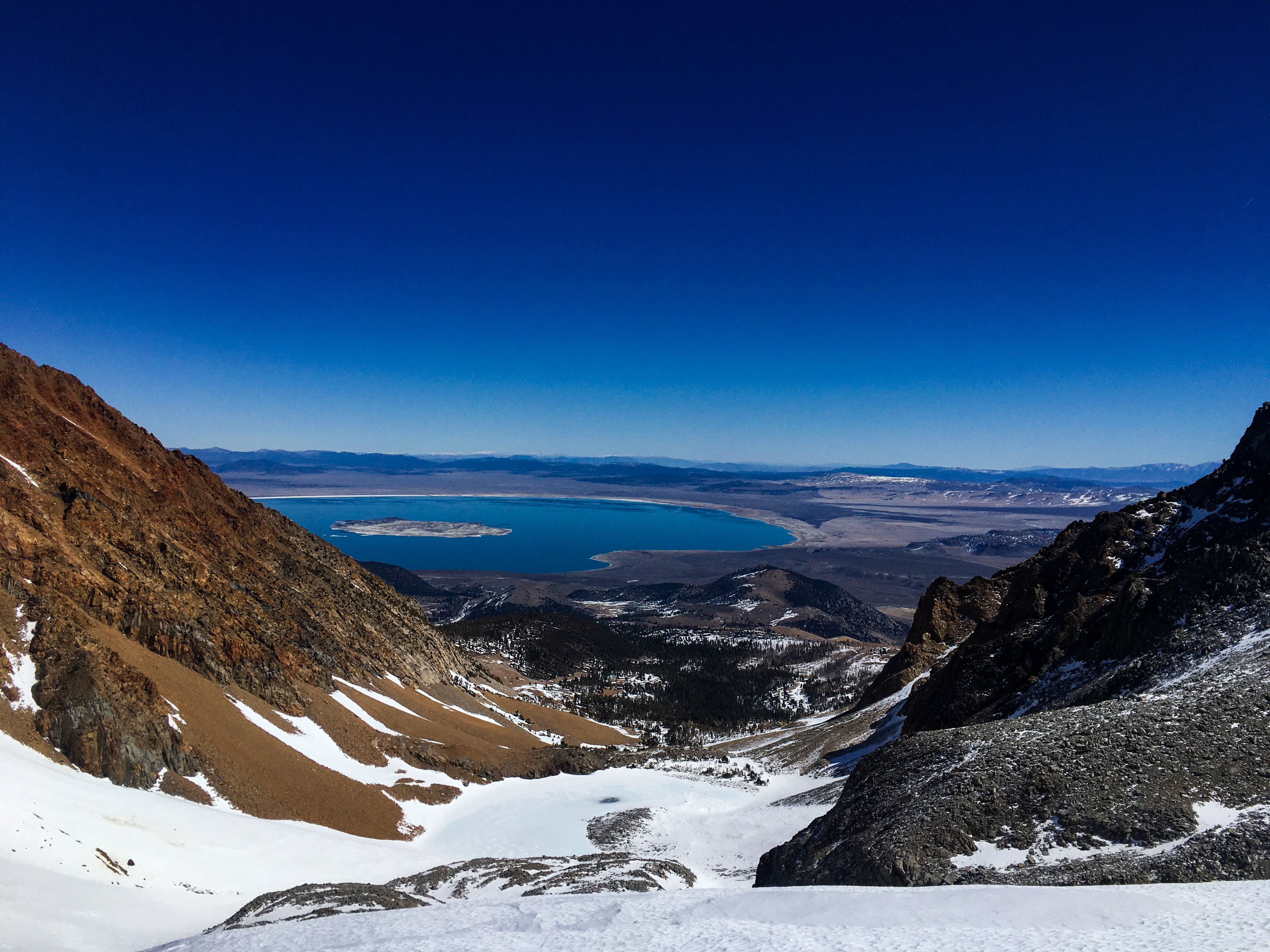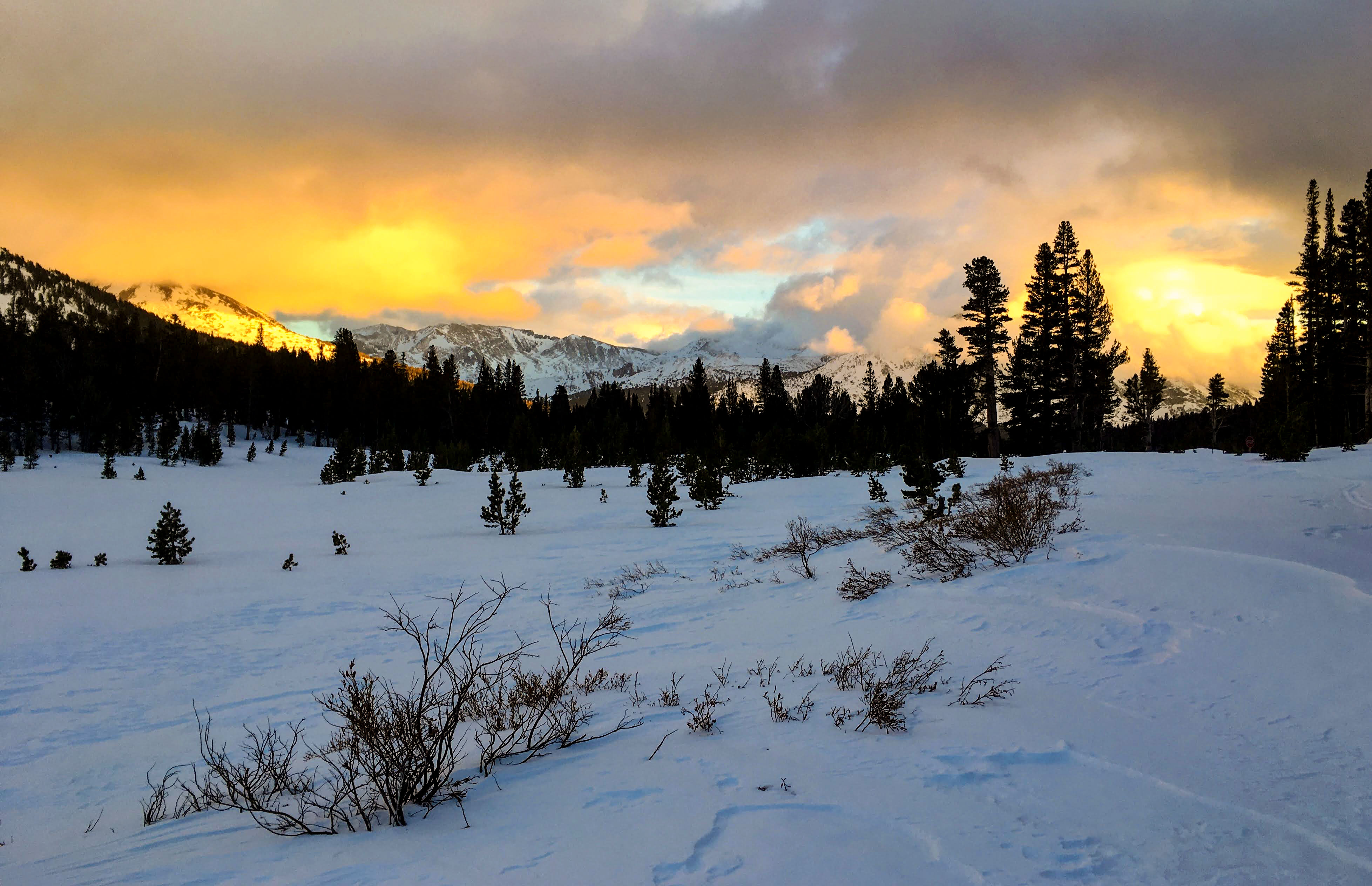
It was a dry week with temperatures near seasonal norms. Not much has changed as of our lasting posting in regards to ski conditions or weather. With the daylight hours now stretching into the evening, being outdoors now has more of a spring feel to it. In Tuolumne Meadows the ponds and streams are quickly changing from aquamarine slush to running water. The ski touring remains good and fast, though the heat of the day is producing some manky snow conditions. There is little snow above 11,000 feet due to the prolonged dry spell and incessant winds. As we progress further into spring, more aspects will be producing corn snow, but as the snowpack continues to shrink the window for spring skiing may also be shortened. Snow line starts at the Warren Fork (9,000 feet) on the east side of Tioga Pass.
Avalanche and Snowpack Conditions
Please refer to the Eastern Sierra Avalanche Center (ESAC) for the avalanche advisory for this part of the Sierra Nevada.
The avalanche hazard will be dynamic this week given the forecast. As of this writing the avalanche danger is low in the Tuolumne Meadows area.
The snowpack in the Tuolumne Meadows area is springlike and supportable. Snow depths range from two to five feet. Skis or snowshoes are still necessary to visit the Yosemite high country. We encourage people to visit the wilderness in winter and to be creative with their adventure, but proper preparedness and safety should also be a part of the plan.
Snow Travel Tip

As the warm temperatures of the lower elevations lure more people into the high country, it is easy to forget there is still snow up here. In dry years like this, footprints, snowshoe, and ski tracks can be found going every which way except the right way. Carry a PLD (personal location device) and/or smartphone with a navigational app. Make sure you have already downloaded maps of the area prior to your trip. And, the old-school map and compass are still important tools in case batteries or electronics die (often due to cold or water) or for when there is poor satellite coverage. Practice with these tools when you know where you are; not when it’s getting late, dark, cold and/or cloudy. Even if you’re on a “day hike” be prepared to spend the night out if you get lost. Nobody “plans” on getting lost.
Wildlife
On the days where it was calm and the sun was shining, we were able to hear the mating calls of the mountain chickadee and brown creeper. Red crossbills and white breasted nuthatches are also becoming more vocal. The resident corvids, the common raven and Clark’s nutcracker can be glimpsed flying by. This morning really feels spring-like as a Williamson’s sapsucker can be heard drumming in the misty rain. The northern flicker has returned to the area, staking its claim along the Tioga Road where the south-facing hillside is now exposed to where it can forage on the ground as well as in the trees. Apparently this lodgepole pine forest is quite attractive to many woodpecker species as the hairy woodpecker also shares its home nearby.
Questions
The wilderness is open! Please #RecreateResponsibly by planning and preparing thoroughly for your outdoor activities in the park.
Read through the following two pages before embarking on any day or overnight snow travel within this park:
You may contact us with any additional winter Tuolumne Meadows related questions.

